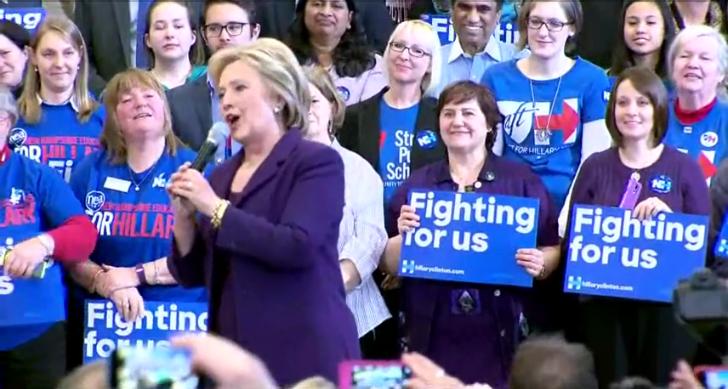March 27, 2012
Quest for status unearths Aboriginal identity issues
For many Canadian citizens who move abroad, the prospect of having to make a decision as to whether or not to keep their citizenship isn’t even a necessary conversation.
And here at home, choosing to marry someone from a different country or of a different race generally doesn’t require one having to give up their own cultural identity.
March 27, 2012
Quest for status unearths Aboriginal identity issues
For many Canadian citizens who move abroad, the prospect of having to make a decision as to whether or not to keep their citizenship isn’t even a necessary conversation.
And here at home, choosing to marry someone from a different country or of a different race generally doesn’t require one having to give up their own cultural identity.
But for more than 100 years, Aboriginal women were forced to make that decision. Prior to April 17, 1985, marrying out – marrying a non-aboriginal man – meant a loss of Indian status for the women and their future children.
For a traditionally matrilineal society, this was always deemed as a blow.
“Women are decision makers. It’s something that has a huge impact on me an an aboriginal woman,” said Lillian George, president of United Native Nations.
The government made moves to remedy the situation more than 25 years ago.
In 1985, Parliament adopted Bill C-31 that amended the Indian Act to ensure Indian women who married non-Indian men didn’t lose their status as well as to restore status to those who had lost it prior to 1985.
But it also created two classes of Indians in the revised Section 6 of the Act: those who could pass their status on to their children and those who could not, unless the other parent also has status.
That same year, Thompson Indian Sharon McIvor was quick to apply for her status. Born in 1948, McIvor had never applied for registration because she understood she was ineligible due to non-Indian paternity two generations back.
As a member of the Lower Nicola Band, McIvor had married a non-Indian herself in 1970, further losing any entitlement to be registered under the Indian Act.
Her application was accepted, but that of her son, Jacob Grismer, was not. For the next 20 years, McIvor was embroiled in a legal battle. Women who married non-Indians and their children got status – which was McIvor’s situation. But the women’s grandchildren did not, while the grandchildren of Indian men and non-Indian women did get status.
“In 1989, I decided to challenge the sex discrimination in the registration provisions because, as a woman, I was not treated equally as a transmitter of status, and as a result, my own children and grandchildren were ineligible for registered status. Many thousands of other Aboriginal women and their descendants are denied Indian status because of sex discrimination,” McIvor wrote in a letter to members of Parliament.
In the 2007 ruling which afforded one of McIvor’s sons his long-awaited status, B.C. Supreme Court Justice Carol Ross ruled that section 6 of the 1985 Act “is of no force and effect insofar… as it authorizes the differential treatment of Indian men and Indian women born prior to April 17, 1985,” thus violating the Canadian Charter of Rights and Freedoms.
But just because women and their children could now apply for status, doesn’t mean it came easy.
Mtis Housing Society executive director Leo Herbert applied for his status following the 1985 amendment and it took years before he received his card, while resident John Kolosky recently applied for registration.
“I just applied for it last spring because of the Sharon McIvor case,” said Kolosky, whose family moved here from Chetwynd 20 years ago. “I’d like to have stability for my children, get them free education.”
After the issue of status was completed in the eyes of the courts, McIvor and other continued their fight. Next on the list was their unsuccessful bid to urge politicians to vote down Bill C-3, the Gender Equity in Indian Registration Act.
Introduced by then-Minister of Indian Affairs and Northern Development Chuck Strahl in March 2010, the bill modified the Indian Act to comply with the Charter.
Under the amendment, which came into force January 2011, individuals who want to register could do so if their grandmother lost her Indian status as a result of marrying a non-Indian, one of their parents was registered or entitled to be registered under a certain section of the Indian Act, or they or their siblings were born after Sept. 4, 1951.
“Bill C-3 does not end [sexual discrimination]. Bill C-3 will provide a remedy for some Aboriginal women and their descendants, but continue the discrimination against many more,” McIvor wrote in 2010, urging members of Parliament to vote against the amendment.
But outside of fighting against sexual discrimination, there are a variety of issues First Nations people are still working through as a result of the changes made in 1985 and the subsequent Bill C-3.
“Even among the status Indian population, there are various categories of Indians with differing rights,” said Alastair MacPhee, an advisor with the Congress of Aboriginal Peoples (CAP).
In January, the United Native Nations hosted an exploratory dialogue session in Prince George in conjunction with CAP to bring to light some of those issues. They included other problems with band membership and the issue of Aboriginal People’s right to self-determination.
“After Bill C-3, I read somewhere that the government was looking for fresh ideas,” said MacPhee.
CAP held eight or nine of these dialogue sessions across the country.
“The issue of citizenship and membership raises many questions and in fact involves the very survival of Aboriginal Peoples in Canada,” said MacPhee.
One of the remaining sticking points is the issue of identity.
“The ability to determine our own individual and communal identities is one of the most important and inherent Aboriginal rights,” MacPhee said. Although a barrier was removed that prevented many from registering and obtaining official Indian status, the ability to self-identify as an aboriginal person has remained in flux.
“Who’s going to decide who’s an aboriginal person? The Crown or Aboriginal people?” MacPhee asked.
In 2010, Canada ratified the United Nations’ Declaration on the Rights of Indigenous Peoples.
Article 9 of the document, of which Canada was one of the last countries to sign, states that “indigenous peoples have the collective and individual right to maintain and develop their distinct identities and characteristics, including the right to identify themselves as indigenous and to be recognized as such.”
“Canada was the last holdout [to the UN resolution],” said George. “What does that tell us? They don’t want us to be a part of society.”
While some like George and Herbert have always identified as Aboriginal, whether they had a card to back them up or not, residency on or off reserve can play a role.
“I go home [to Hagwilget], attend all my feasts and potlatches, even though I’m living in an urban centre,” said George, who has lived all but eight-and-a-half years of her life off-reserve. “Some of the bands disagree with having First Nations people off reserve.”
But now that he has his status, Herbert said he’s recognized officially as the First Nations person he always knew he was.
“I know I’m connected to indigenous people and that we can work together and solve some or our problems and fight the government together,” he said.
Maintaining that sense of place is key to any element of identity, said George.
MacPhee agreed, noting that sessions held in urban centers unveiled similar themes.
“What surprised me from urban Aboriginal groups we have spoken to is the importance placed on maintaining connections with the home community, maintaining cultural links? That comes out loud and clear. For such a huge amount of Aboriginal people living in these centers, it’s a significant issue,” he said.
“It’s unfortunate when you seem some who aren’t connected and don’t know where they belong,” George noted, adding she sees many young people who don’t have that connection to their family’s band.
“You have to know where you’re from to have a sense of pride within yourself.”
This month, another step in the path to overhaul federal policy was taken.
A CAP policy conference was held March 15 to 17 in Ottawa where 165 delegates spent the weekend in workshops. The input and information from that session will be summarized in a report to CAP executive and taken into account in the development of policy resolutions at next fall’s CAP general assembly.
“After so many false starts and broken promises, I am very optimistic Aboriginal Peoples are finally on the path to full reform of federal policy governing their lives,” said National Chief Anne Lavalle, in a press release.
Courtesy: citizen

















































































































